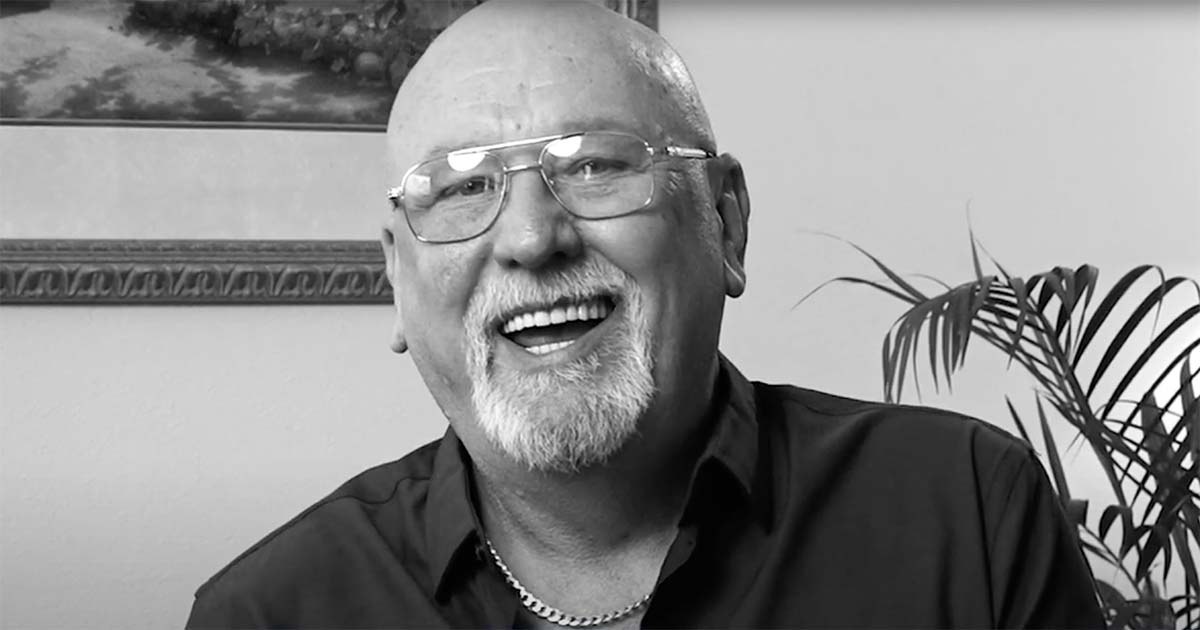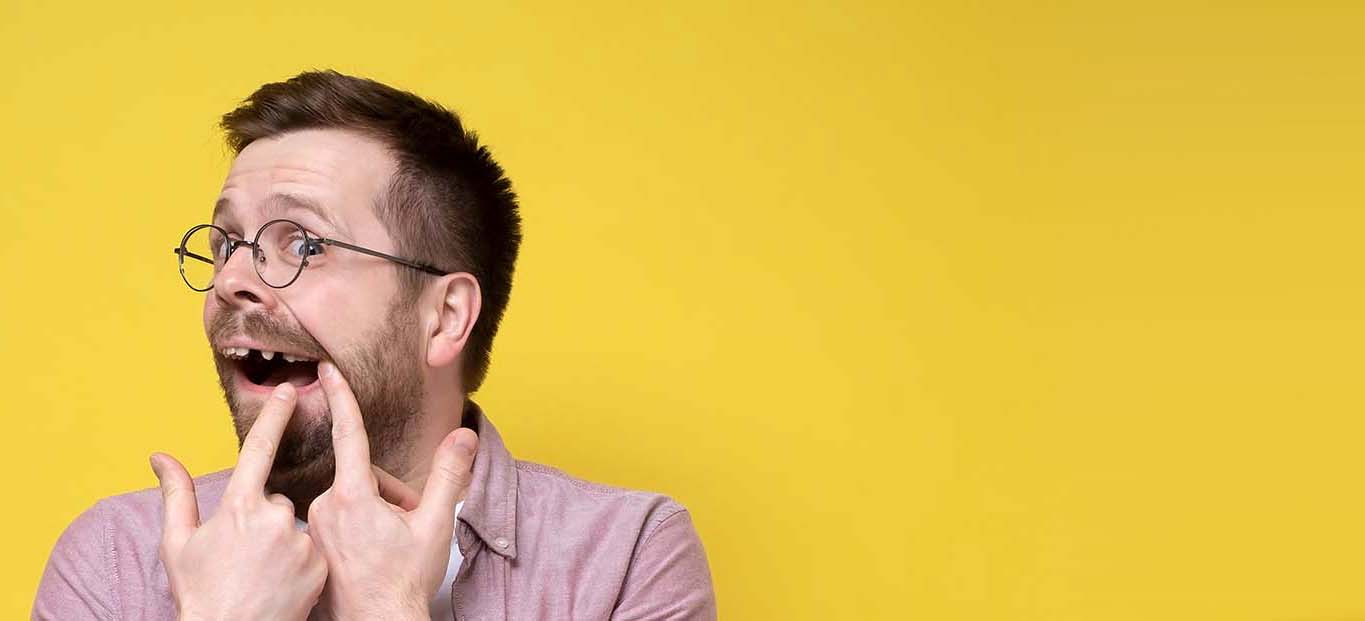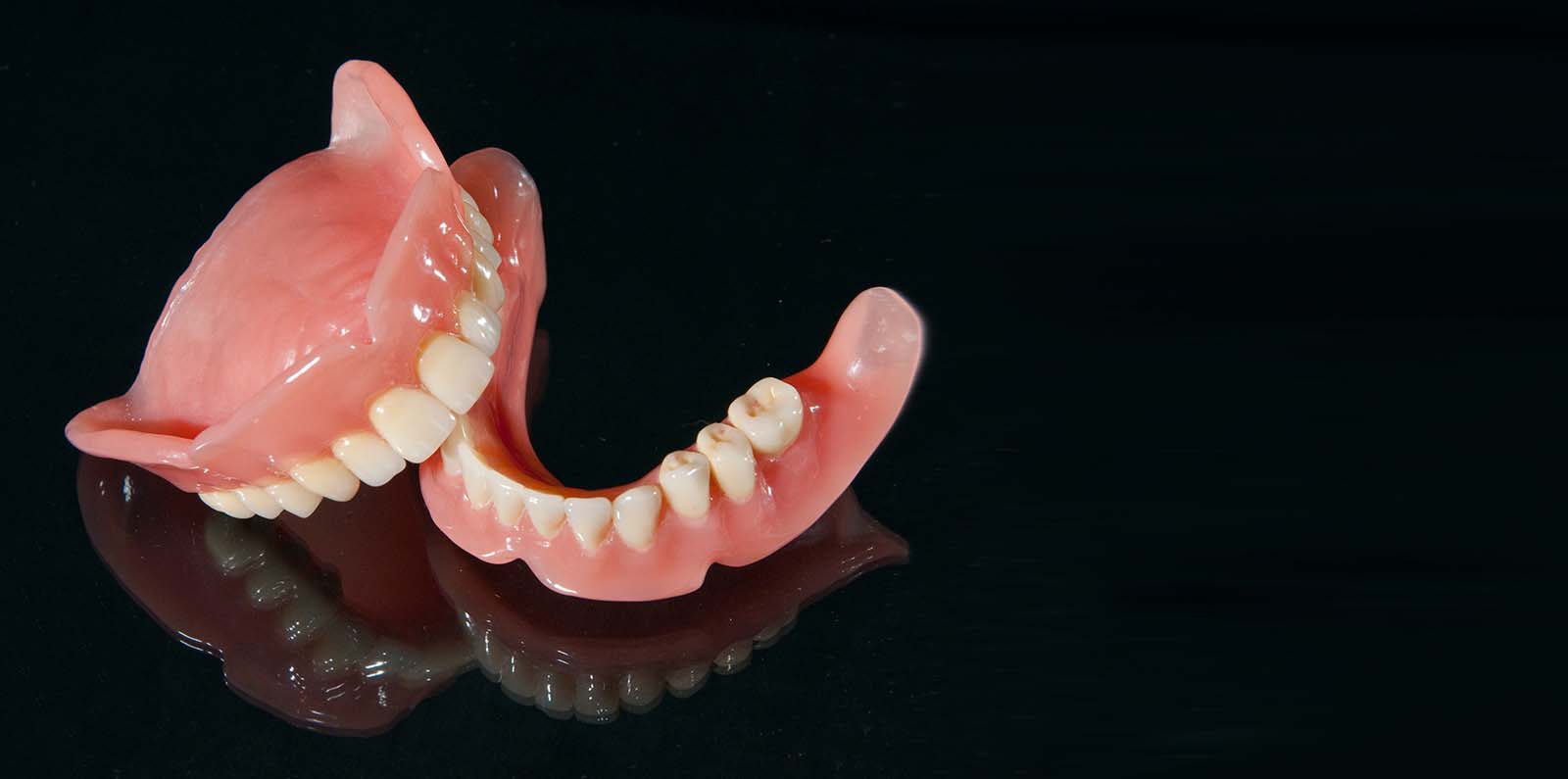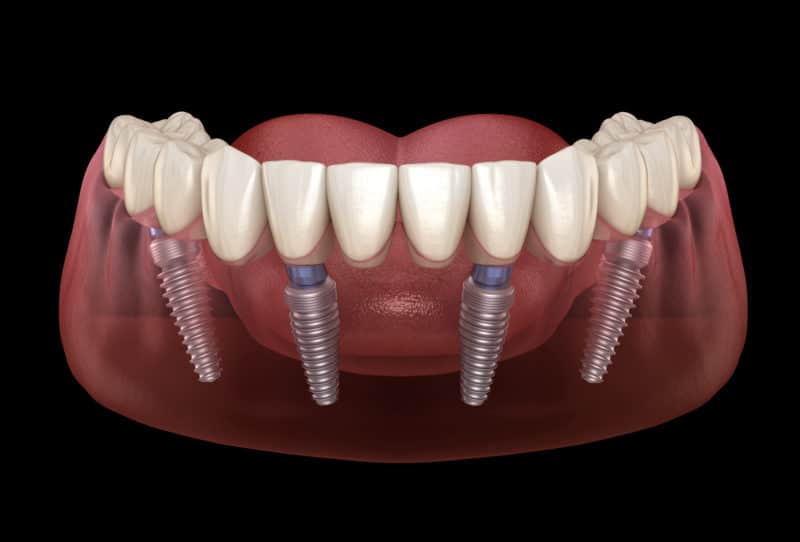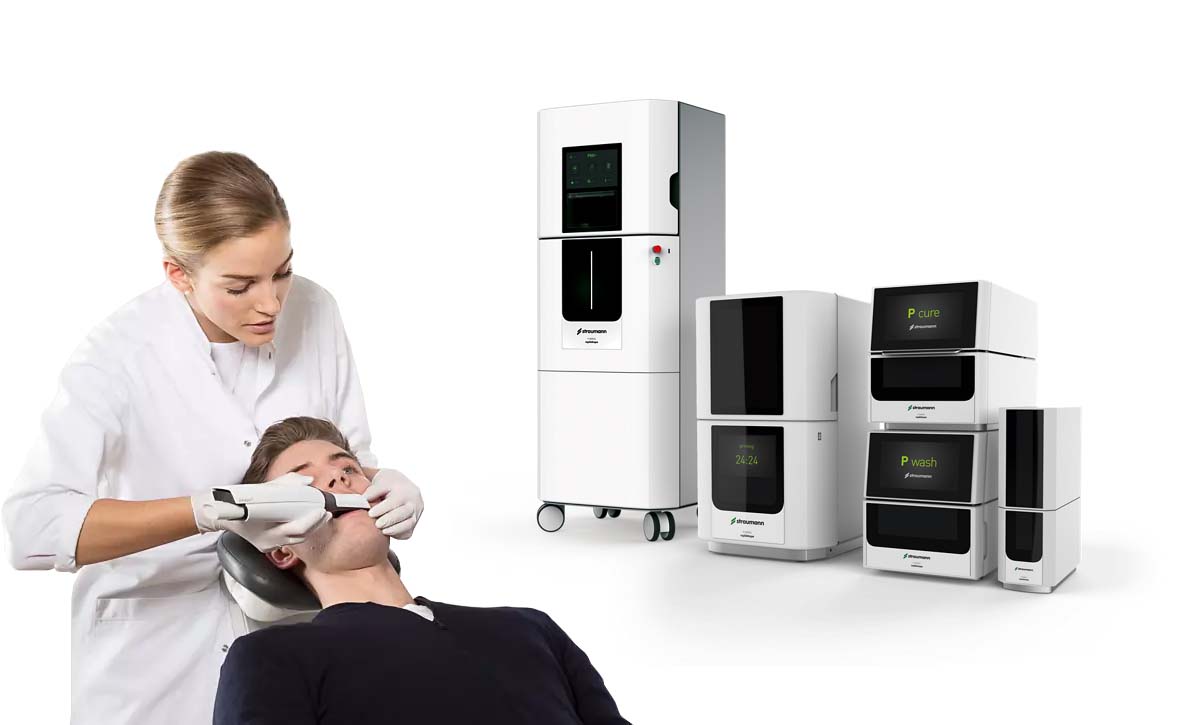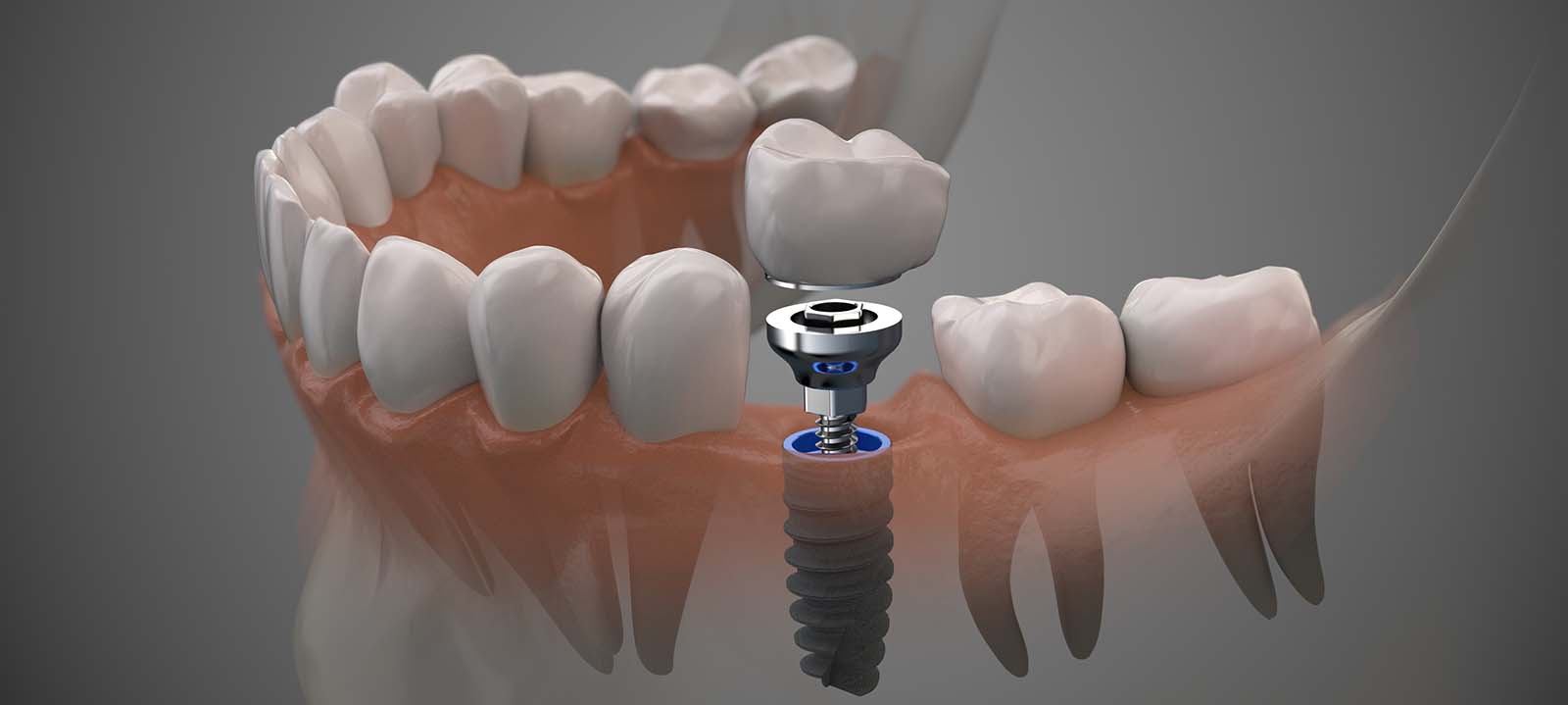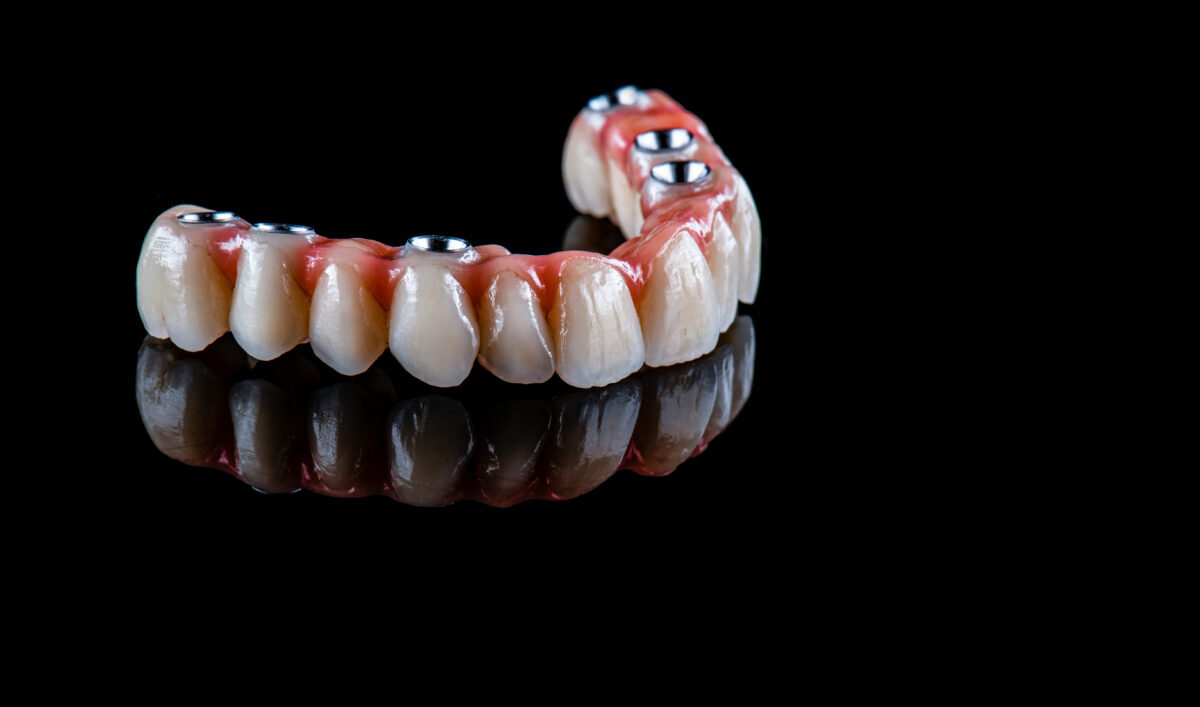Whenever you are considering getting one or more teeth replaced there are many options to consider. Dental implants have come a long way in the last twenty or thirty years. There are some very convenient solutions available now, and there are many different types of implants. Each type of implant is designed to provide certain advantages. Now, your dentist will consult with you and make sure to suggest the best options available however it can be constructive to have a basic understanding of dental implants and the options available. This way you can make a more informed decision on the options that your dentist suggest.
Types of Dental implants:
There are two basic kinds of implants. Nearly all implants follow these two patterns.
Endosteal: Endosteal is a type of implant that is implanted directly into the jaw bone. This anchors the implant allowing it to provide support for replacement teeth in a way that is very similar to how natural teeth attached to the jaw bone. These implants are usually made of titanium which provides a light and slightly flexible anchor for the replacement tooth. Endosteal implants are usually shaped like small screws. These are the most common type of implant, and they are usually the best option. Most other types of implants are only used when there is not enough solid jaw bone to anchor the new tooth into.
Subperiosteal: This is a type of implant that does not make a direct connection to the jaw bone. This implant goes under the gum but above or just on top of the actual jaw bone. This type of implant is used for patients without enough solid, healthy jaw bone to support an implant. These tend to be used in cases where it would be unwise to use an endosteal implant and where bone augmentation is not an option. This type of dental implant is rarely used in situations where an endosteal implant is possible.
Bone Augmentation:
Bone Augmentation: When the jaw bone is unhealthy or if it is not stable enough to support an endosteal implant bone augmentation is usually suggested. Bone augmentation is a remarkably easy process where bone additives and growth factors are used to promote healthy dense bones that are ideal for anchoring. The bone augmentation process takes time in order to regrow dense and healthy bone tissue. This regrowth not only creates ideal spots to anchor implants but also promotes healthy jaw bone. It is not always an option for the patient to undergo this procedure, but it is a reasonably non-invasive one. Where possible this is the preferred method.
Jaw bone can deteriorate where teeth have been missing for a long time. This sometimes occurs in the back of the mouth when the wisdom teeth have been removed. This kind of deterioration can occur in any places that have not supported teeth for a long time. This deterioration is relatively common even in patients with healthy jaw bones. The body just does not maintain what it does not use. Because of this deterioration, bone augmentation is a fairly regular procedure even among healthy patients.
There are other processes which can be used to strengthen areas deterioration of the jaw bones. These are mostly used wherever regular bone augmentation is not an option, and the need for anchor points in the jaw is great. These procedures generally involve grafting bone where it is needed to provide a solid anchor point for new teeth. These processes are a bit involved, but they can be useful whenever other options are not available.
Alternative Implants:
Immediate Load Dental Implants: This type of implant is a variation on the endosteal implant. Immediate load dental implants are often anchored to the jaw bone and then fitted with a temporary tooth. This is usually done so that the implant has time to integrate into the jaw bone. It can take some time for the jaw bone to strengthen around the implant. During this time a temporary tooth fitted to the implant allows the patient to go back to regular life while the Jawbone integrates the implant. Disintegration process often takes about one month also it can take more or less time depending on the patients Dental needs and the strength of the jaw bone.
Once the implant has integrated into the jaw bone, the temporary tooth may be removed and replaced with a permanent tooth. These permanent teeth are usually made of ceramic. Ceramics have come a long way, and some of them can be made hard enough to scratch diamonds. This makes for some pretty durable tooth replacements. That being said, once the permanent tooth has been fitted to the implant continue to use regular hygienic practices.
Immediate load dental implants are highly convenient dental implant options. This option is very commonly used. It is also referred to and advertised as same day dental implants.
Mini Dental Implants (MDIs): Mini dental implants are smaller versions of the regular endosteal implant. They’re usually about the size of a stirring straw. Because of the size difference between these implants they can often be installed in much smaller and less invasive procedures. Mini dental implants are not always used and tend to be a situational solution. Most of the time they are used to make dentures more stable or as a solution to a difficult placement situation.
Implant Multiples:
Bridges: Bridges are dental implants that support more than one tooth. They tend to support groups of 2-4 consecutive teeth. Bridges can be very convenient because they allow multiple teeth to be supported by one or two implants. These teeth are often connected so that they are one piece under the gum connected to one or two implants.
The implants used as part of a bridge are fairly common and tend to be the most convenient way to replace several consecutive teeth at once. In many ways, they are much faster And more effective than several single implants would be.
All-on-4 Implants: These types of implants are designed to replace an entire bridge. This means either the entire upper or lower jaw and all of its teeth being replaced. A bridge usually has between ten and fourteen teeth. When 6 or more of the teeth in a single Bridge are compromised, worn down, or missing this is usually a good time to consider and all-on-4 implant.
All-on-4 implants are only anchored in four places using this procedure. Two of the implants are upfront on either side of the jaw, and two of the implants are in the back at either side of the jaw. Because only four implants are needed to anchor these teeth, all-on-4 implants can be very useful four people who have areas of the jaw bone that are unhealthy or weak. Because the implants only need to be anchored in four places instead of under every tooth they can be strategically placed in areas with the strong jaw bone.
In addition to the other advantages of an all-in-4 implant is implants are usually placed using a 45-degree angle which bypasses areas of weak bone and mouth structure issues. For those looking into large-scale tooth replacement, the options are far better than they used to be. Rather than get so uncomfortable dentures entire bridges of teeth can be replaced with relative ease in a surgery lasting about two hours.
All-on-4 implants work much like a combination of Bridge implants and immediate load implants. The bridge is evaluated, and a replacement set of teeth is created. Once they’re ready a relatively simple two-hour surgery installs the four that will be anchored to the jaw, and temporary teeth are connected to these implants. Once the implants have integrated with the bone, the permanent set of teeth is installed and replaces the temporary set. At that point, the teeth are usually ready for normal use within twenty-four hours.
This set of implants may seem fairly complicated, but the procedure is actually quite simple. It consists of one surgery and a few follow-up visits. These replacement teeth are shown to have 80% of the biting power that natural teeth have and can last a long time. The success rate for these procedures is high, and with the same hygienic practices that you use to clean natural teeth, these implants can last you a lifetime.
More on this can be found at this incredibly informative Los Angeles dental implants website:
Click Here
All-on-6 Implants: This type of implant is very similar to the all-on-4 implants with only a few differences. All-on-6 implants are anchored evenly along the jaw with one additional implant on either side of the jaw. While the other implants are not always necessary, they provide extra anchoring points and additional stability. The procedure is still relatively simple with a high success rate and has an even faster recovery rate than the all-in-4 implants.
Much like all-on-4 implants this type of implant replaces six or more compromised, worn down, or missing teeth. This procedure is also designed to replace the entire upper or lower set of teeth. The all-on-6 implants also have the benefits of being able to strategically place anchors in the stronger and healthier parts of the jaw bone which is very useful when some parts of the jaw bone are unhealthy or weak. When bone augmentation is not an option, this can be a great solution.
All-on-6 Implants can also be installed in a much faster procedure. Because there are six implants the implants themselves do not need to spend time grafting to the jaw bone like they do in the all-in-4 procedure. This means that a permanent set of teeth can be installed during the surgery. Any follow-ups are only to check on the teeth as you adjust to them. This allows for much faster recovery time and an incredibly fast transition to the permanent set of teeth. These are also sometimes referred to as same day dental implants.
Another small advantage gained by opting for the all-on-6 implants is that there is less shifting when chewing and speaking. Now, keep in mind that these implants are usually made of titanium which makes them slightly flexible. This is on purpose, and even natural teeth shift somewhat. The additional implants further reduce the shifting and for some patients that is preferable.
All-on-6 implants also require the same hygienic practices used to clean and care for natural teeth. They can also last a lifetime if cared for properly.
More on this can be found At this incredibly informative Los Angeles dental implants website:
Click Here
General Advice:
When looking at tooth replacements, some of the best advice is to find a reliable dentist to work with. Most dentists will take x-rays and get an in-depth analysis of what is going on in your mouth. They will combine years of study and practice into a set of options based on the situation you are in. Now, in some cases, there is one option that stands out, but sometimes there are a few different options that each have their own advantages. This is relatively common, and so it can be very valuable to have a dentist who is willing to sit down and talk about the options with you.
Understanding the basics of Dental implants will help the dentist explain the situation and put you into a great position to make a choice that you will be happy with for decades to come.





